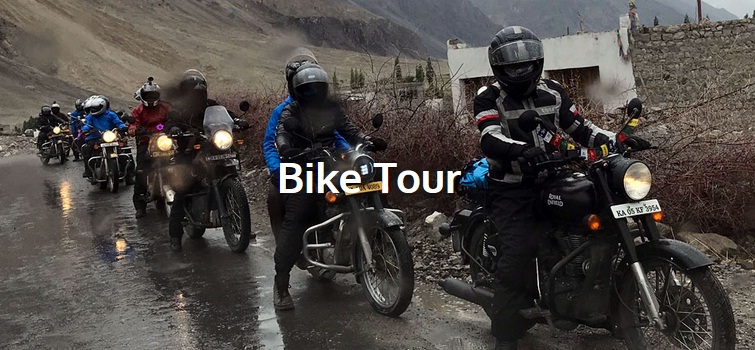 Manali to Leh bike trip is an awesome tour having a lot of adventure in passing majestic mountains, blue rivers and clear lakes, hot springs, and much more.
Manali to Leh bike trip is an awesome tour having a lot of adventure in passing majestic mountains, blue rivers and clear lakes, hot springs, and much more.
Bikers never get tired of riding on their motorcycles, and like to travel distant places on long journeys. If you are also one of them, then Step up Himalaya welcomes you for Manali to Leh bike trip, and it will come across as a blessing for you. The most popular bike tours with Step up Himalaya are Manali Lahaul Spiti bike tour, Manali Leh Manali bike tour and Spiti bike tour. One thing that is common in is that they all go through places, which are highly picturesque comes as the blessing to all. The roads are well-made which allows for smooth rides; whereas the rocky and narrow roads will try to make the journey thrilling for you.
Step up Himalaya has 10 days fixed departure for Manali to Leh bike trip. This tour is from Delhi to Manali and you will ride approx 2000km.
The elevation of Manali to Leh bike trip is more than 4,000 m and its highest elevation is 5,328 m. It is covered by mountain ranges on both sides featuring some stunning sand and rock natural formations. We will try that you will explore all the famous destinations of Manali and Leh Ladakh region in your Manali to Leh bike trip. The total length of the highway in Manali to Leh bike trip is about 490 km.
In 10 Days you will cover
• Rohtang Pass
• Lahual & Spiti
• beautiful Nubra Valley
• Pangong Lake
• Khardungla pass
You will ride through highest top of Himalayas with Step up Himalaya. This bike tour will offer everything you are looking for. So, get ready with Step up Himalaya Manali to Leh bike trip.

 Step Up Himalaya created a combined beautiful trek to Kans Dhaar Trek and famous Bijli Mahadev for trekkers, hikers and adventure & nature lovers. This trail can be done in both summers and winters.
Step Up Himalaya created a combined beautiful trek to Kans Dhaar Trek and famous Bijli Mahadev for trekkers, hikers and adventure & nature lovers. This trail can be done in both summers and winters. One of the most popular hill stations in India, Kullu Manali trip is a amidst the mountain slopes, with spell-binding views, charming streams, fairy-tale-like fog surrounding little hidden cottages and a lingering scent of pines and freshness. The heavy influx of tourists has led to the exploitation of Manali as a tourist destination, though the surrounding areas are still relatively untouched. Nevertheless, this is one place that should definitely be on your bucket list.
One of the most popular hill stations in India, Kullu Manali trip is a amidst the mountain slopes, with spell-binding views, charming streams, fairy-tale-like fog surrounding little hidden cottages and a lingering scent of pines and freshness. The heavy influx of tourists has led to the exploitation of Manali as a tourist destination, though the surrounding areas are still relatively untouched. Nevertheless, this is one place that should definitely be on your bucket list.